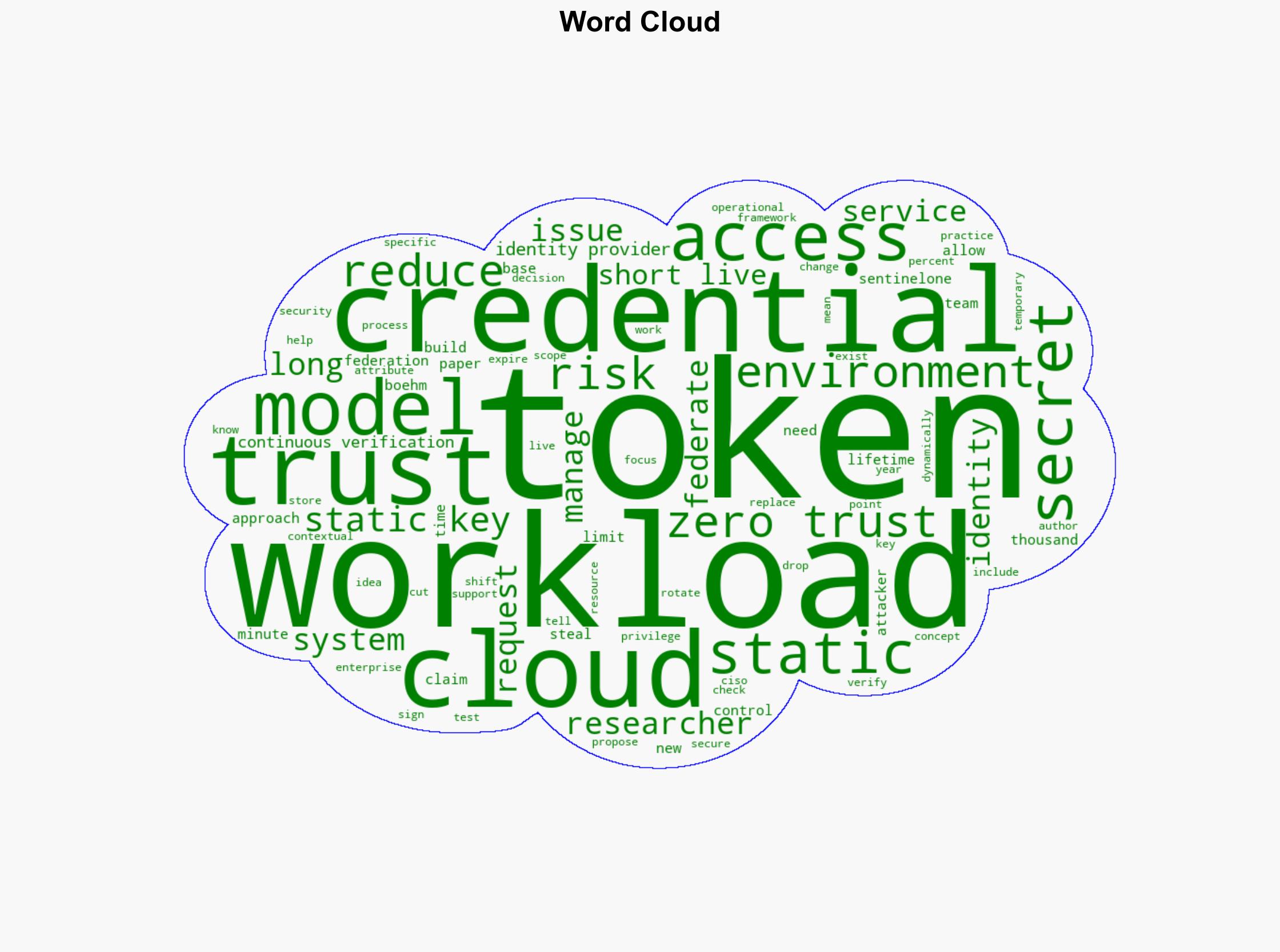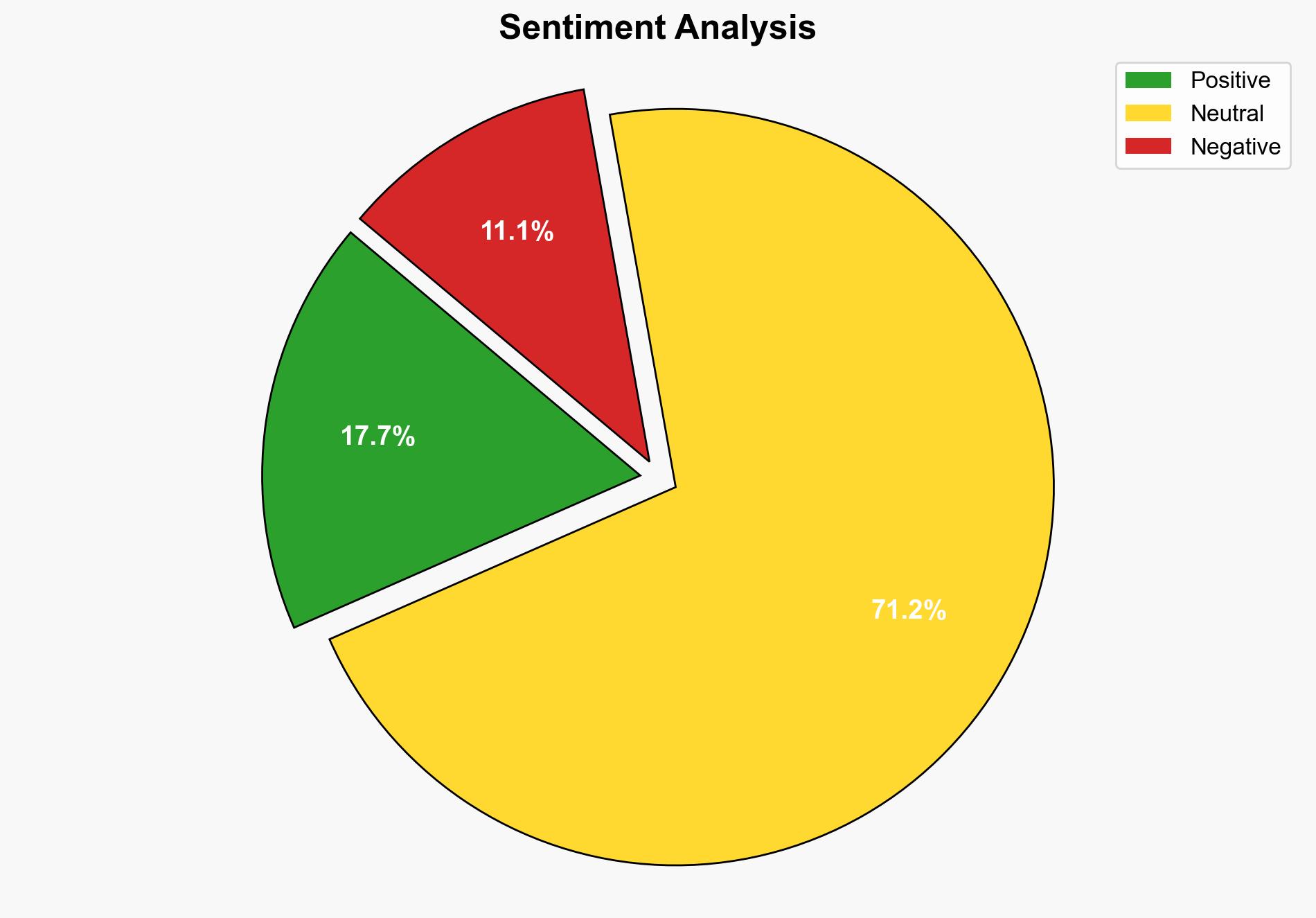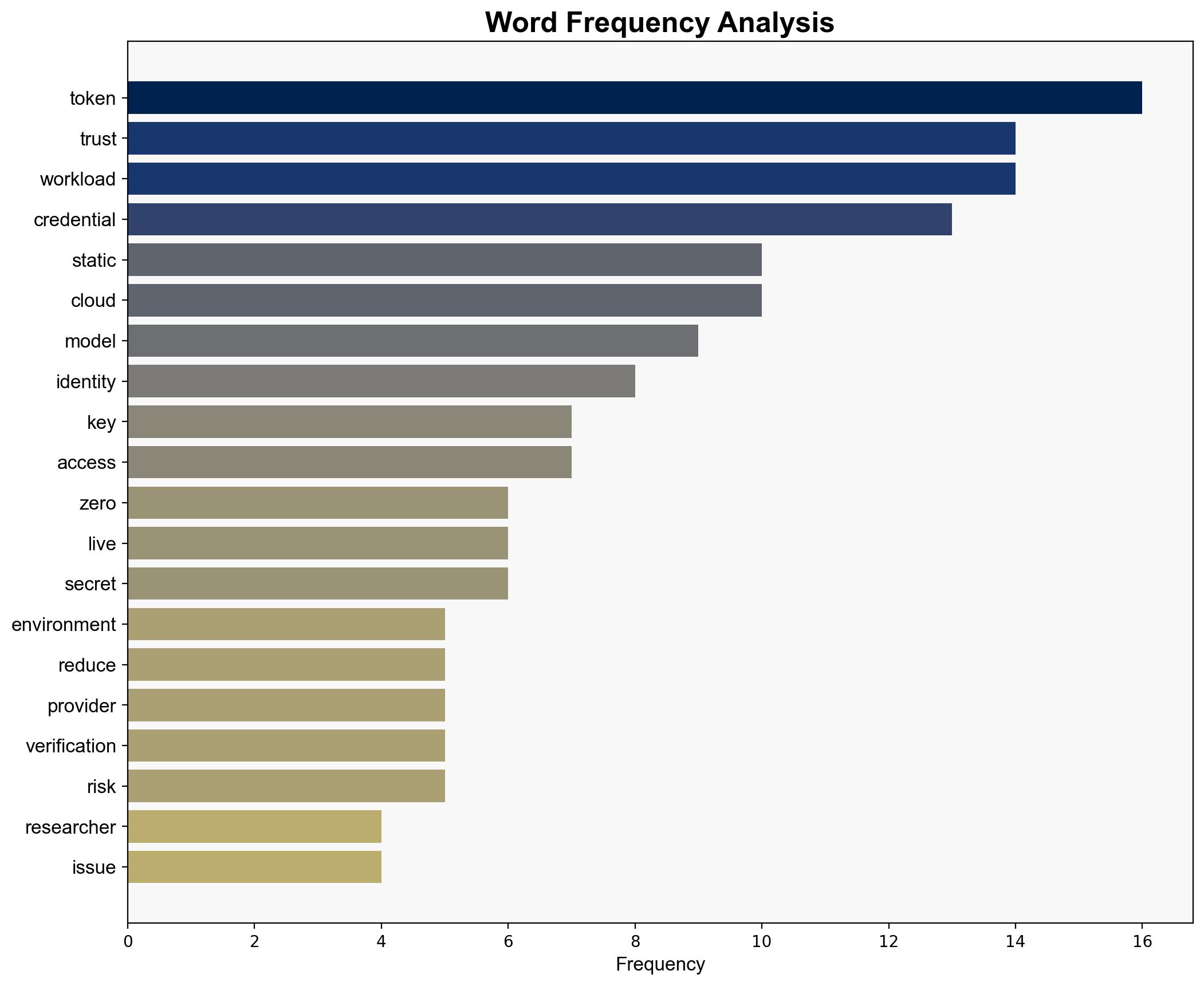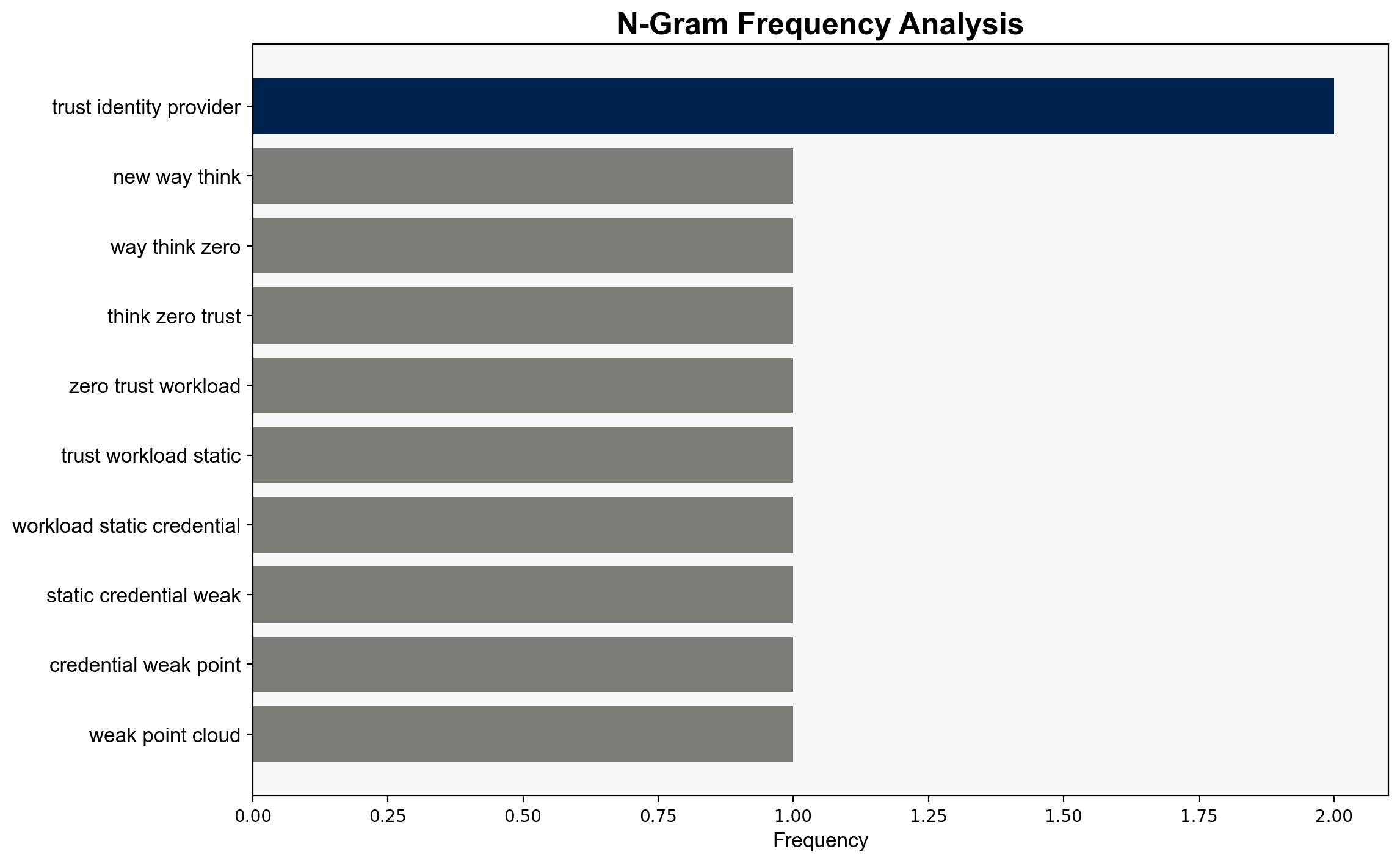A new way to think about zero trust for workloads – Help Net Security
Published on: 2025-11-03
Intelligence Report: A new way to think about zero trust for workloads – Help Net Security
1. BLUF (Bottom Line Up Front)
The most supported hypothesis is that the adoption of temporary, verifiable tokens for workload authentication significantly enhances security by reducing the risks associated with static credentials. This approach aligns with zero trust principles and is backed by successful enterprise-scale testing. Confidence in this hypothesis is moderate to high. Recommended action is to encourage organizations to transition to this model to mitigate security risks associated with static credentials.
2. Competing Hypotheses
1. **Hypothesis A**: The use of temporary, verifiable tokens for workload authentication effectively reduces security risks and operational burdens associated with static credentials. This approach aligns with zero trust principles and has been successfully tested in large enterprise environments.
2. **Hypothesis B**: The shift to temporary, verifiable tokens introduces new operational complexities and potential security vulnerabilities, such as increased reliance on identity providers and potential token interception, which could offset the benefits of reducing static credential use.
Using Bayesian Scenario Modeling, Hypothesis A is better supported due to the empirical evidence from enterprise-scale testing and alignment with zero trust principles, which are widely regarded as best practices in cybersecurity.
3. Key Assumptions and Red Flags
– **Assumptions**: Hypothesis A assumes that identity providers are secure and that the token system cannot be easily compromised. Hypothesis B assumes potential vulnerabilities in the token system are significant enough to outweigh its benefits.
– **Red Flags**: Lack of detailed information on the security measures of identity providers and potential vulnerabilities in the token system. Absence of comparative data on the operational impact of both models.
4. Implications and Strategic Risks
Adopting temporary tokens could significantly reduce the attack surface in cloud environments, lowering the risk of unauthorized access. However, reliance on identity providers introduces a single point of failure, which could be exploited if not properly secured. The transition may also require significant changes in existing infrastructure, posing short-term operational challenges.
5. Recommendations and Outlook
- **Mitigation**: Organizations should conduct a thorough risk assessment of identity providers and implement additional security measures to protect token systems.
- **Exploitation**: Leverage the reduced operational burden and increased security to enhance overall cybersecurity posture.
- **Projections**:
- **Best Case**: Successful integration of the token system leads to enhanced security and reduced operational costs.
- **Worst Case**: Security vulnerabilities in the token system are exploited, leading to significant breaches.
- **Most Likely**: Gradual improvement in security with manageable operational adjustments.
6. Key Individuals and Entities
– Chris Boehm
– SentinelOne
– Identity providers using OpenID Connect (OIDC) technology
7. Thematic Tags
cybersecurity, zero trust, cloud security, identity management





